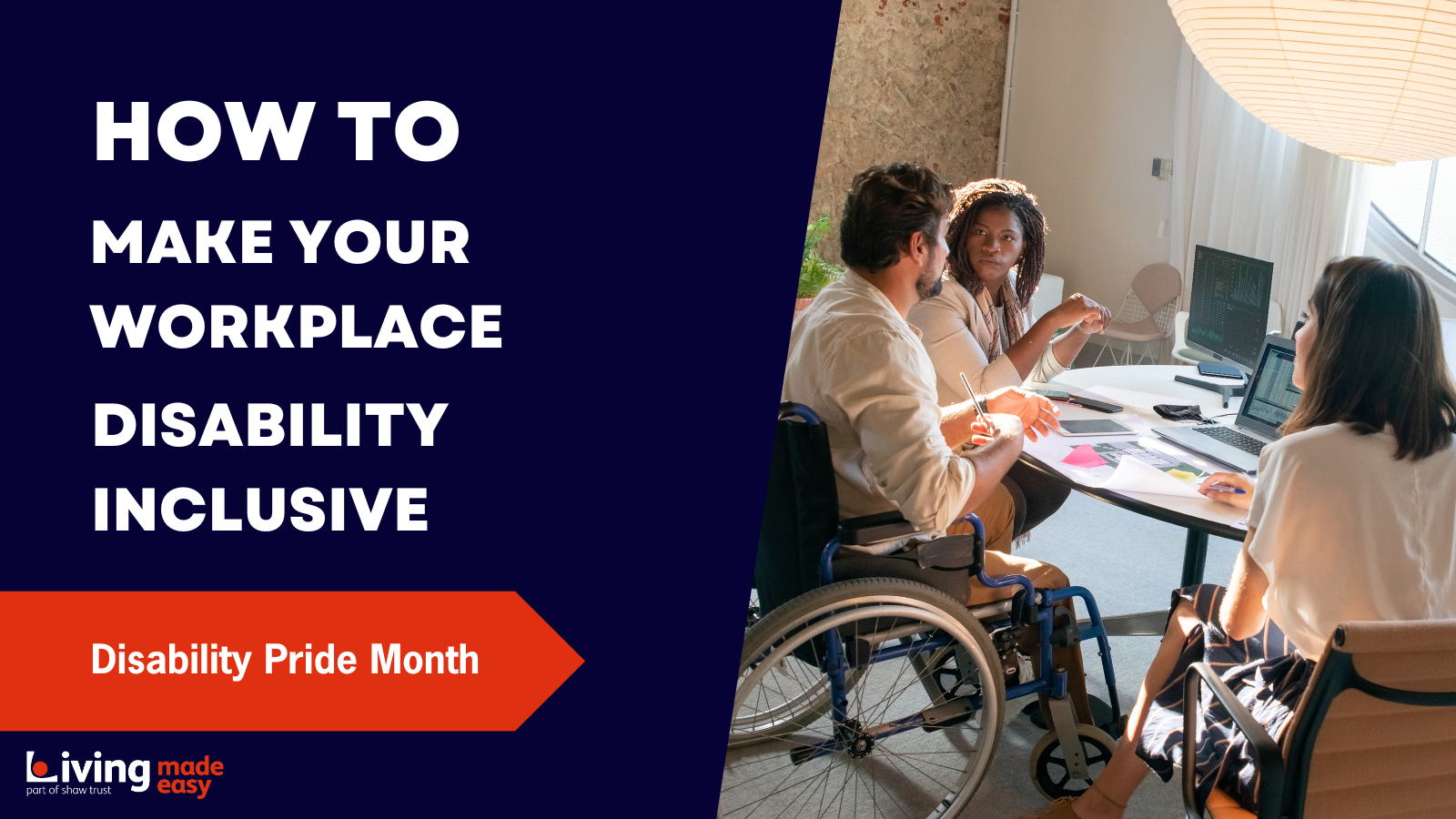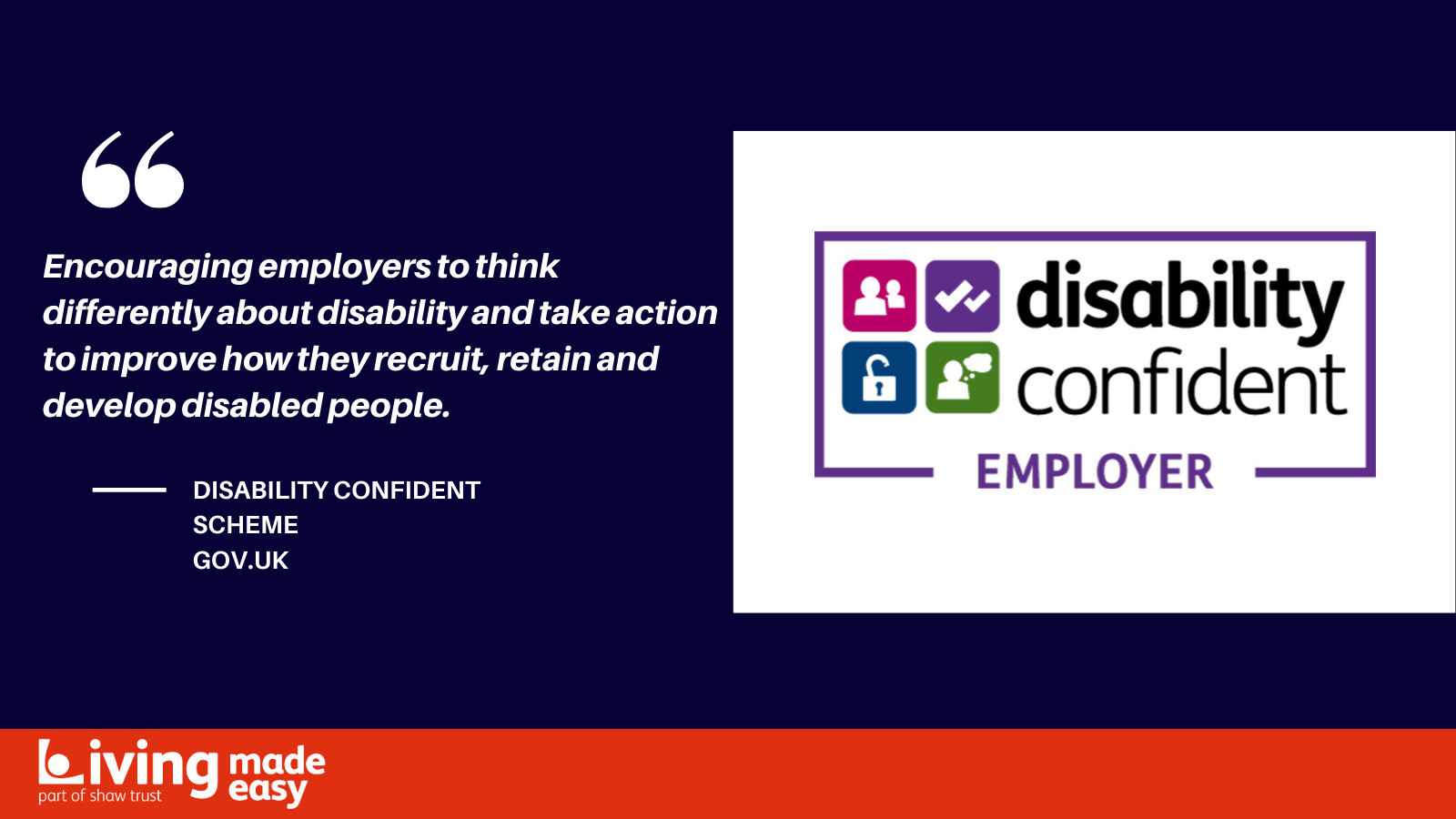Disability Pride Month: How to make your workplace Disability Inclusive

As we draw to the end of Disability Pride Month, we wanted to bring awareness to one of the biggest challenges facing the disabled community, which is the difficulty of getting into the workplace. According to the Office of National Statistics, the employment rate of disabled people is 53 per cent, compared to 82 per cent for non-disabled people. Disabled people are almost twice as likely to be unemployed than non-disabled people.
The difficulty of recruiting and retaining disabled staff is the fact that many workplaces are not accessible, and often they are not accessible right off from job advert and recruitment process.
.png)
There has been a 50 per cent increase in the number of disabled people in the workplace since 2013, meaning now 1 in 7 workers have a disability, according to research by Resolution Foundation. With more disabled people than ever in work there needs to be a better understanding from employers, and colleagues, about disabled people and the challenges they face. However, whilst the rise in employment amongst disabled people might suggest there have been improvements to the workplace and the removal of barriers, research suggests the reported increase is down to more workers disclosing that they have a disability. It is important to know that making changes to be more disability inclusive not only benefits disabled colleagues, but non-disabled colleagues too. By making the workplace more inclusive, all employees are given a voice and made to feel their attributes and skills are valued. Inclusion makes for a healthier work environment and a diverse team, and when recruiting can help to attract new talent from a much wider pool.
Five ways to make the workplace more disability inclusive
1. Make your recruitment process inclusive and accessible.
Disabilities must not be discriminated against at any point of the recruitment process (As per the Equality Act 2010). You should make sure that job adverts are accessible to all by: The following are a number of ways that you can ensure that your job adverts are accessible to all:
- Using a large and easy to read font
- Making sure that you do not exclude any part of the community, and stating clearly you welcome applications from all and have an equal opportunities policy
- Include in the person specification only the skills that are required for the job, for example specifying applicants must have a driving licence when there is no requirement for travel for the role. This can lead to an exclusion of certain groups.
- Provide contact details for someone in your organisation who can provide more information and discuss any reasonable adjustments an applicant may need
- Provide alternatives to the application format, for example a paper application form as well as the online application
Whilst conducting interviews, under the Equality Act 2010, you must not ask about an applicant’s health until you have offered them employment other than to ask whether they will need any reasonable adjustments for the interview or find out if they can carry out functionality of the job.
2. Develop knowledge and implement training.
Being inclusive isn’t just about hiring disabled people, but about having leaders within the company who understand disability and inclusion. Start by learning about the experiences and barriers disabled people face and implement companywide training on disability and accessibility so that all staff can educate themselves.
Research shows that negative attitudes are one of the biggest barriers disabled people face, and this impacts how they experience the workplace. By removing negative attitudes and barriers, people will be more comfortable to share their impairment or condition and will also allow for a better working environment, resulting in a higher quality of work.
All colleagues should attend training on disability inclusivity so that the stigma that surrounds people with disabilities can be addressed, and so they can hold knowledge of awareness about the experiences of their disabled co-workers.
3. Appoint a disability and inclusion leader.
Many companies choose to appoint someone within their workforce to become someone who can make sure disability inclusion remains a priority. They will be accountable for disability inclusion within your leadership team, and so should have been provided with the relevant training to be able to carry out the role. They will be able to agree on what the company would like to achieve, decide what is needed to carry out these plans, and feedback to the leadership team with any progress or updates.
Ideally, this person will have lived experience of a disability or health condition or is an ally to the disabled community. The disabled employees within your company should be able to have trust in this person to be their voice for the company.
4. Provide support for disabled colleagues.
It’s important to develop internal company strategies to be able to support people with disabilities at work. One of these could be to ensure reasonable adjustments are provided to remove as many physical barriers as possible in the workplace that you are able to for individuals to be able to carry out their job effectively. At Living Made Easy, we have a team of Occupational Therapists, so we provide our own reasonable adjustments scheme for all colleagues to access.
You should also make sure that the work set is accessible to all employees, as well as any company policies and procedures. High productivity can’t be expected if the work set to employees isn’t accessible to all.
Another way to provide support would be to set up a group, or network, for disabled employees to access and come together to share experiences and support. By setting up this group, the members could feedback to company leaders any changes they would like to see, so that the company is constantly evolving and making positive changes. It is important to learn about the needs and concerns of disabled employees as they can help you to learn about best practice.
5. Become a Disability Confident Employer.
The government has set up the Disability Confident scheme and it is aimed to be ‘encouraging employers to think differently about disability and take action to improve how they recruit, retain and develop disabled people.’ By becoming a Disability Confident employer it gives you the opportunity to recruit talent from the disabled community you might not have before. It will also help you to help your employees to reach their full potential and contribute to their success.
By becoming Disability Confident you are leading by example in your sector, by promoting positive changes in attitudes and behaviour.

The tips above are not an exhaustive list, we should be constantly educating ourselves on accessibility and inclusivity, but implementing these five steps is a good way to start. By understanding the barriers disabled people face, and removing as many of them as possible in the workplace makes for a happier work environment.
We hope you have found this article helpful and informative. For more information please click on the bold and underlined text below.